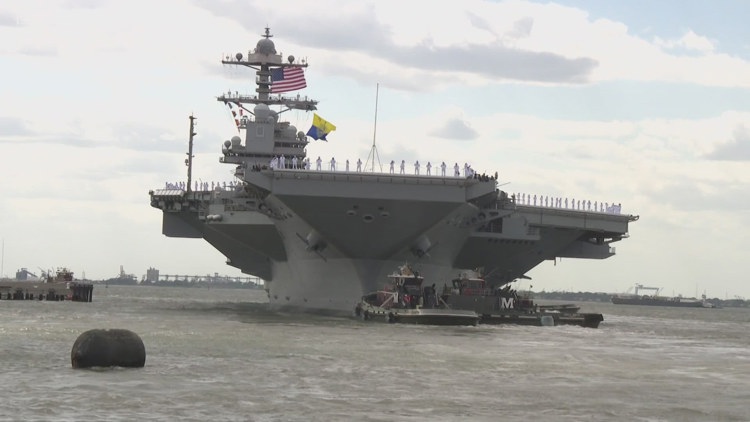U.S. Navy and NATO Allies Conduct Joint Operations in the Mediterranean
Ships from the USS Gerald R. Ford Carrier Strike Group, which was deployed from Naval Station Norfolk in June, are now working alongside NATO allies in the Mediterranean Sea. This collaboration marks a significant step in strengthening military ties and ensuring regional security.
The strike group recently integrated with the Italian Navy frigate ITS Spartaco Schergat on Sunday, July 20, to conduct interoperability exercises. This event followed a transit through the Strait of Gibraltar on July 19, where the group was joined by Spanish and U.S. support ships. The joint operations are part of ongoing efforts to enhance coordination and readiness among allied forces.
Rear Adm. Paul Lanzilotta, commander of Carrier Strike Group Twelve, expressed his appreciation for the opportunity to work with an Italian Allied warship upon entering the Mediterranean Sea. He emphasized that the transit through the Strait of Gibraltar with Spain and the naval integration with Italy represent just the beginning of their collaborative efforts.
“Our transit through the Strait of Gibraltar with Spain and naval integration with Italy is just the beginning of our efforts together in deterring regional aggression and improving the lethality of our forces by raising readiness and responsiveness with our Allies and partners,” said Rear Adm. Lanzilotta.
Cmdr. Michele Spada, commanding officer of the Italian frigate ITS Spartaco Schergat, highlighted the importance of this collaboration. He noted that the partnership allows for an “extraordinary exchange of experiences” and helps strengthen trust and skills between crews.
Composition of the USS Gerald R. Ford Carrier Strike Group
The Gerald R. Ford Carrier Strike Group consists of several key vessels, including the aircraft carrier USS Gerald R. Ford (CVN 78), guided-missile destroyers USS Bainbridge (DDG 96) and USS Winston S. Churchill (DDG 81), as well as squadrons from Carrier Air Wing Eight. These assets operate within the U.S. 6th Fleet area, supporting regional security, readiness, and NATO cooperation.
The U.S. Navy has stated that these operations demonstrate America’s long-standing commitment to its European allies. The flexibility and adaptability of the U.S. maritime forces play a crucial role in maintaining stability and security across the region.
Strategic Importance of Joint Operations
Joint exercises like those conducted in the Mediterranean are essential for building strong relationships between allied nations. By working together, military forces can improve communication, share best practices, and develop more effective strategies for responding to potential threats.
These operations also serve as a demonstration of the U.S. military’s global reach and its ability to deploy rapidly in response to emerging challenges. The presence of the Gerald R. Ford Carrier Strike Group in the Mediterranean underscores the United States’ continued involvement in international security efforts.
Enhancing Readiness and Lethality
Through these joint operations, the U.S. Navy and its allies are working to enhance the readiness and lethality of their forces. By training together, military personnel can better understand each other’s capabilities and procedures, leading to more effective coordination during real-world missions.
This focus on interoperability ensures that allied forces can operate seamlessly in complex environments, whether in peacetime or during times of conflict. The lessons learned from these exercises contribute to the overall strength and effectiveness of the NATO alliance.
Conclusion
The recent collaboration between the USS Gerald R. Ford Carrier Strike Group and NATO allies highlights the importance of international partnerships in maintaining global security. Through shared training and operations, the U.S. and its allies continue to build stronger, more capable military forces that can respond to any challenge.







